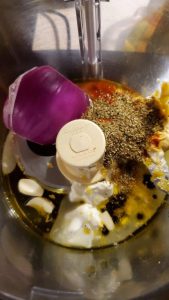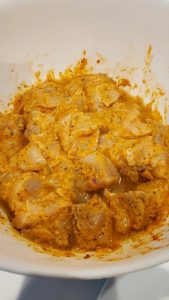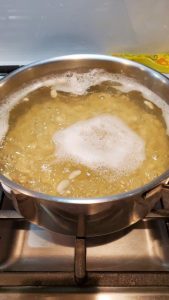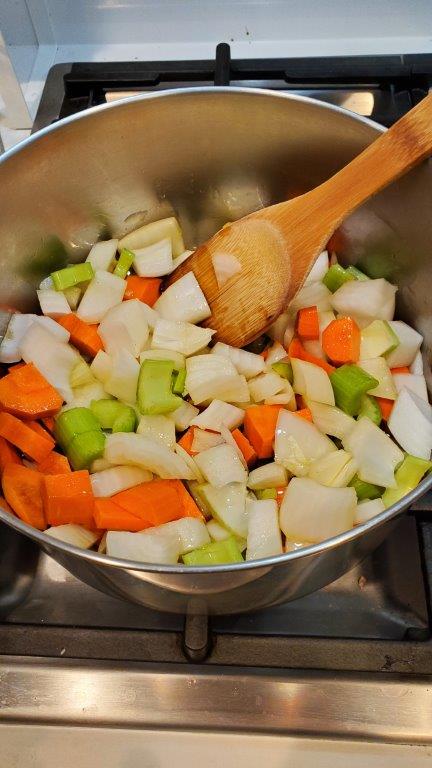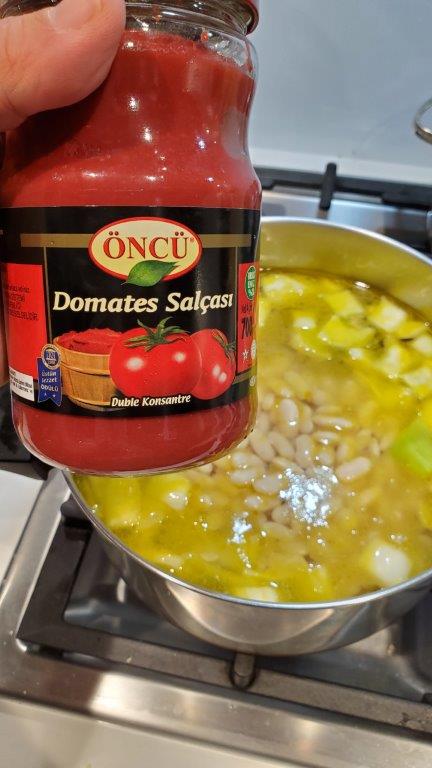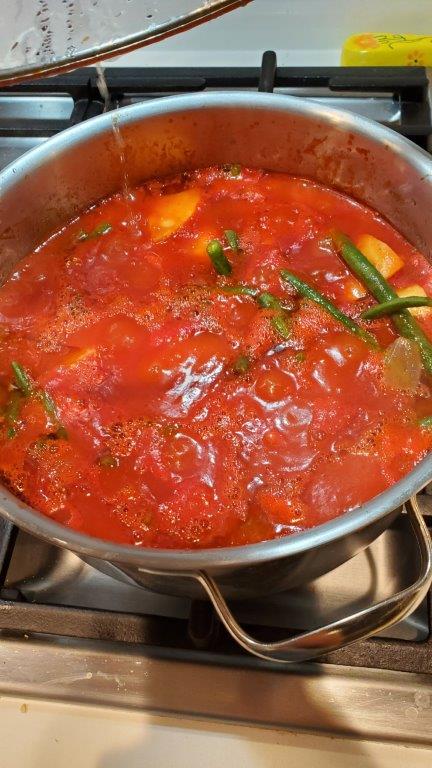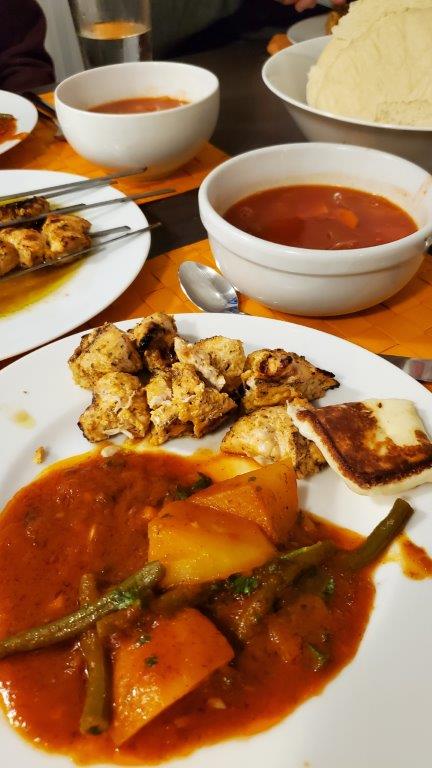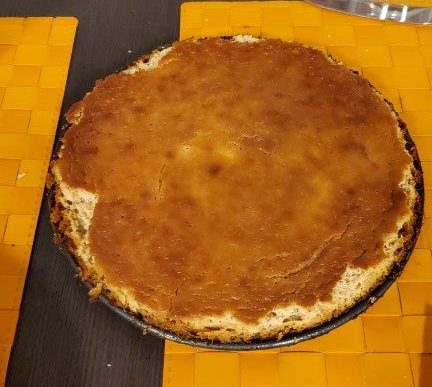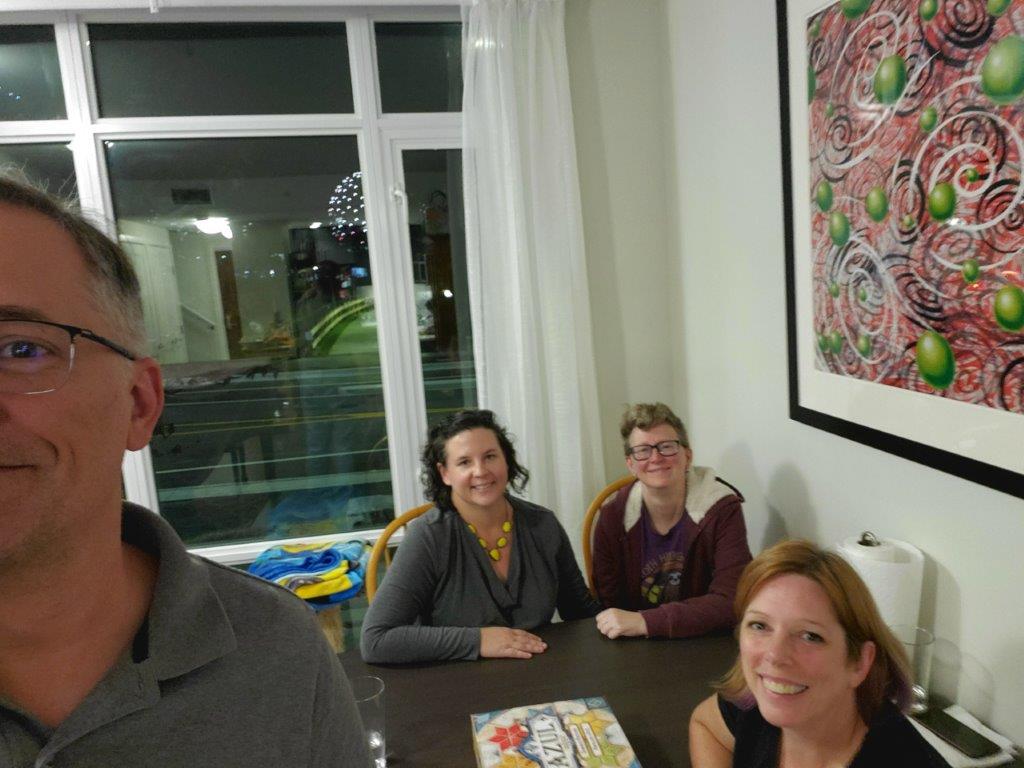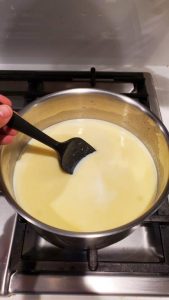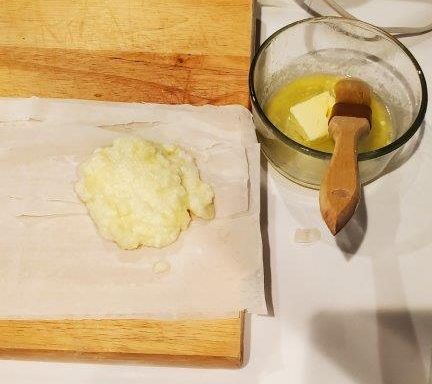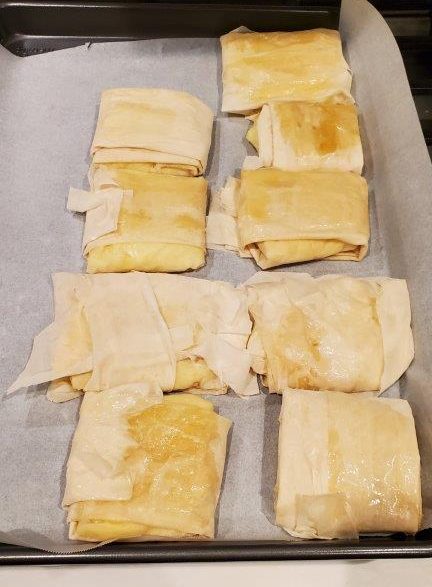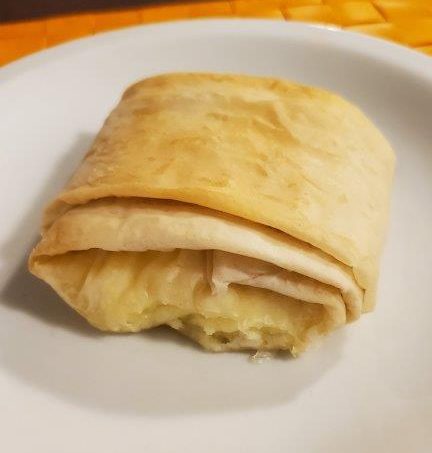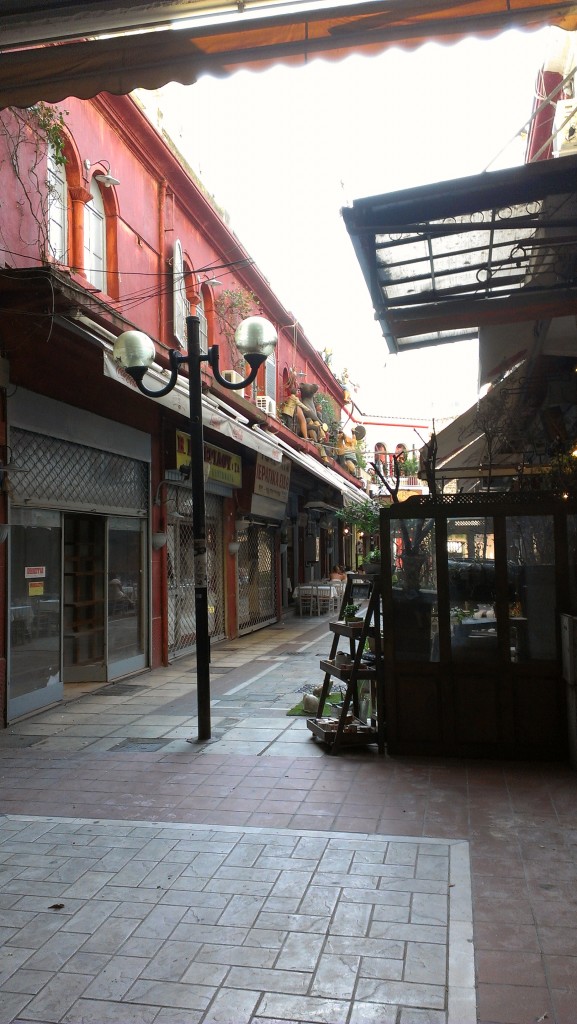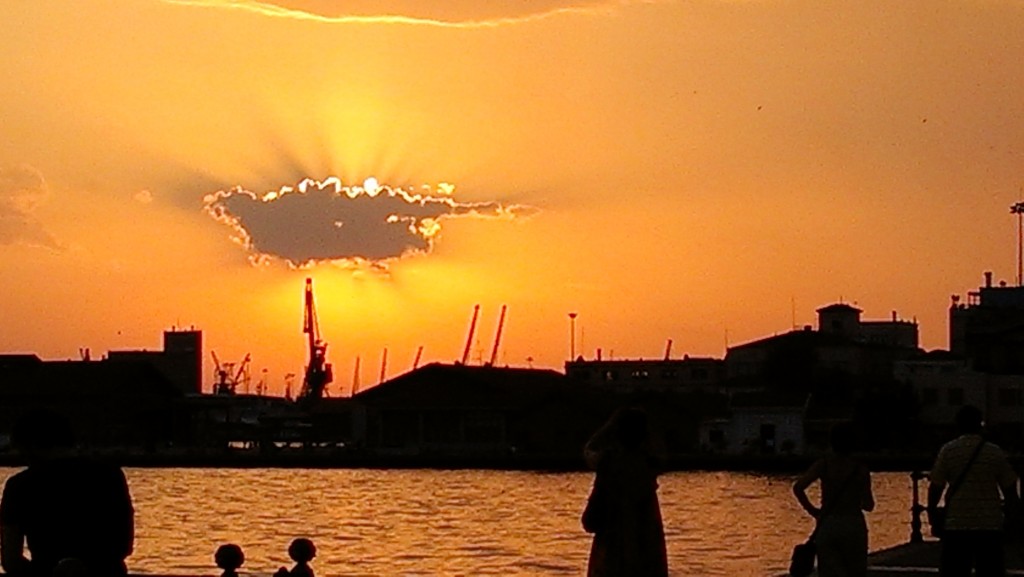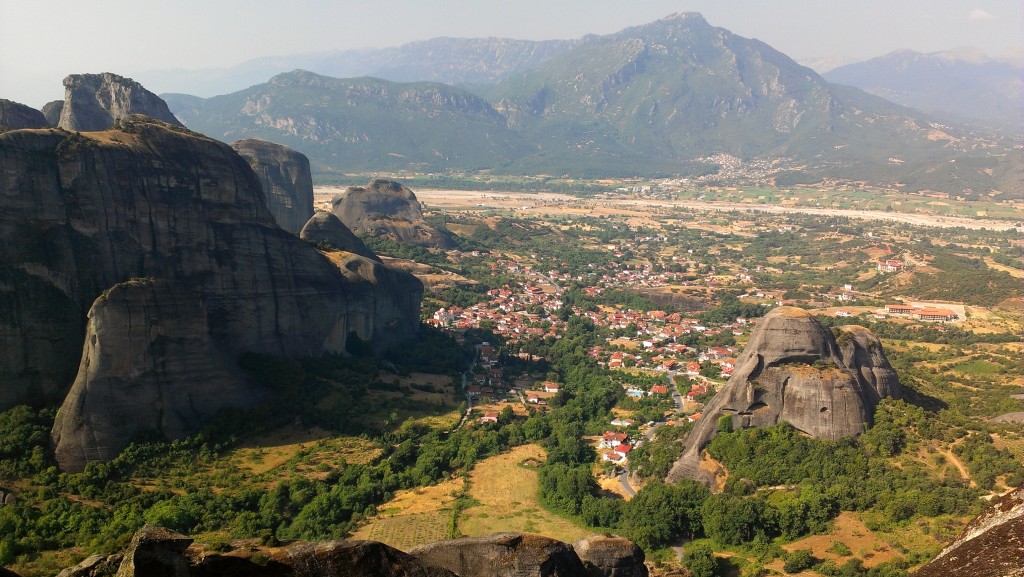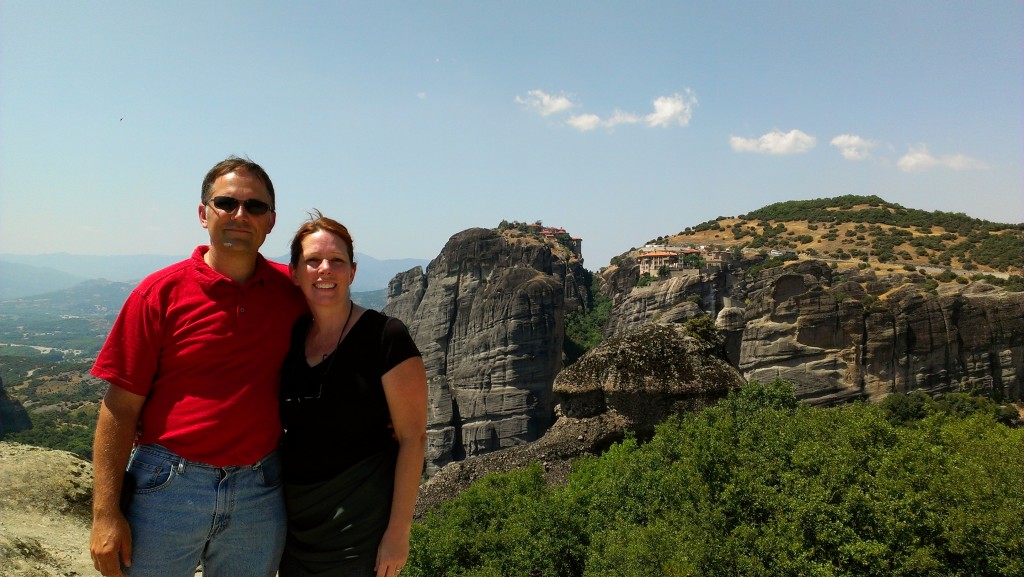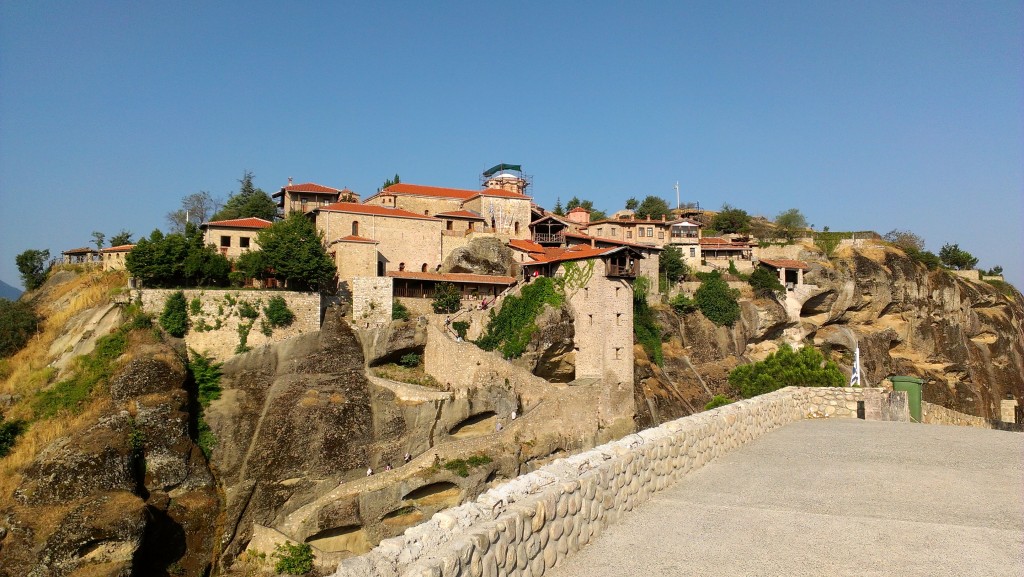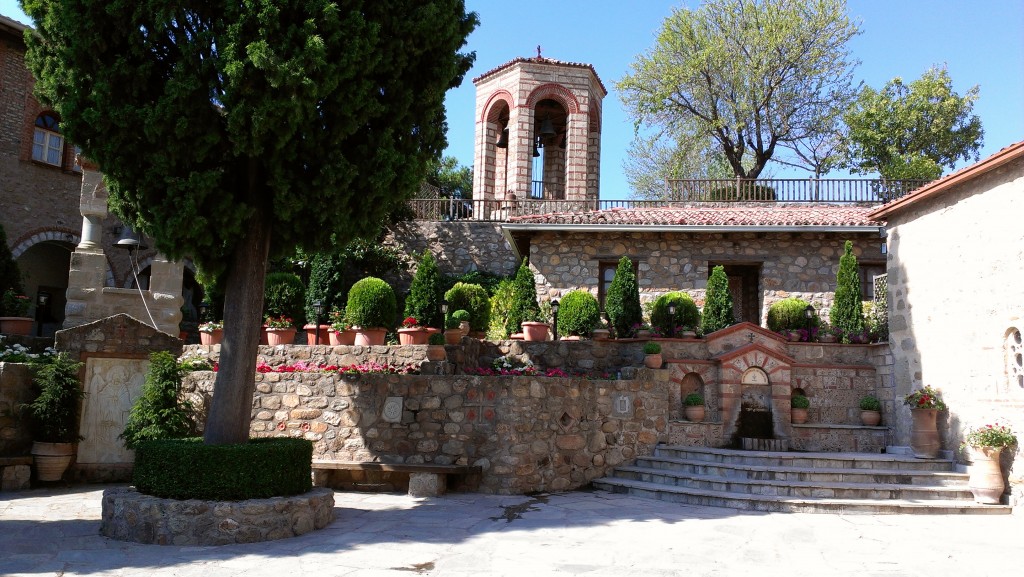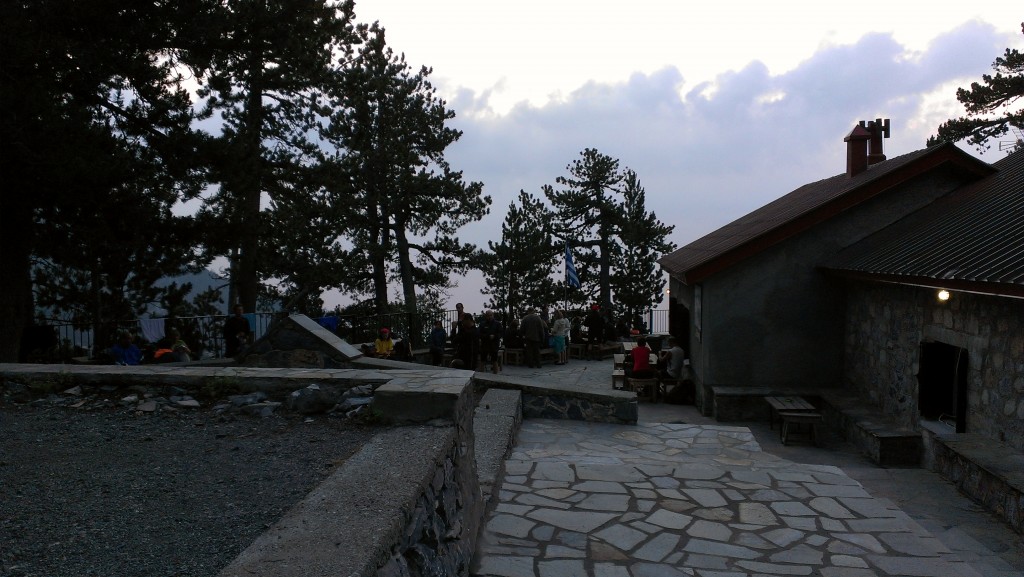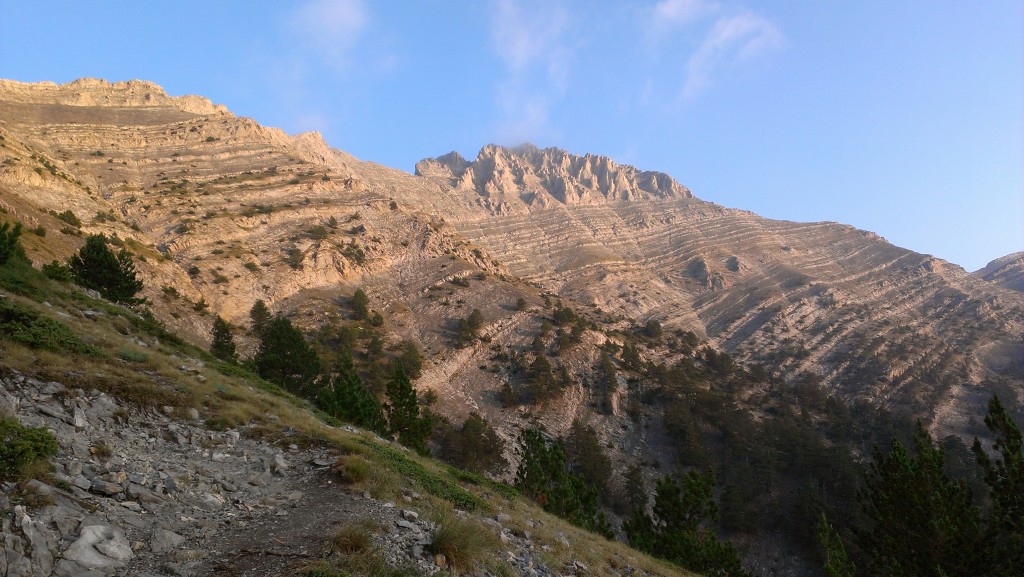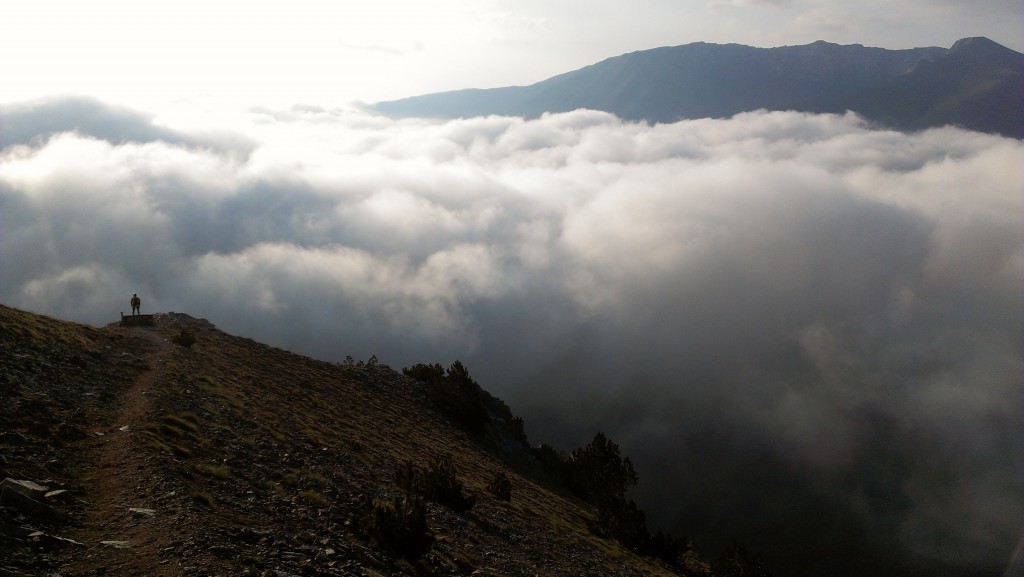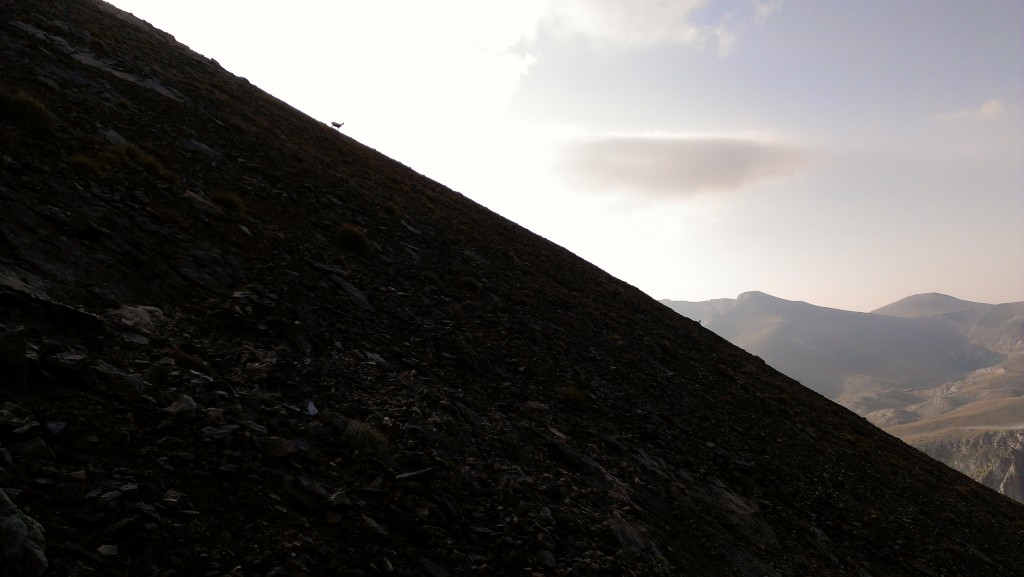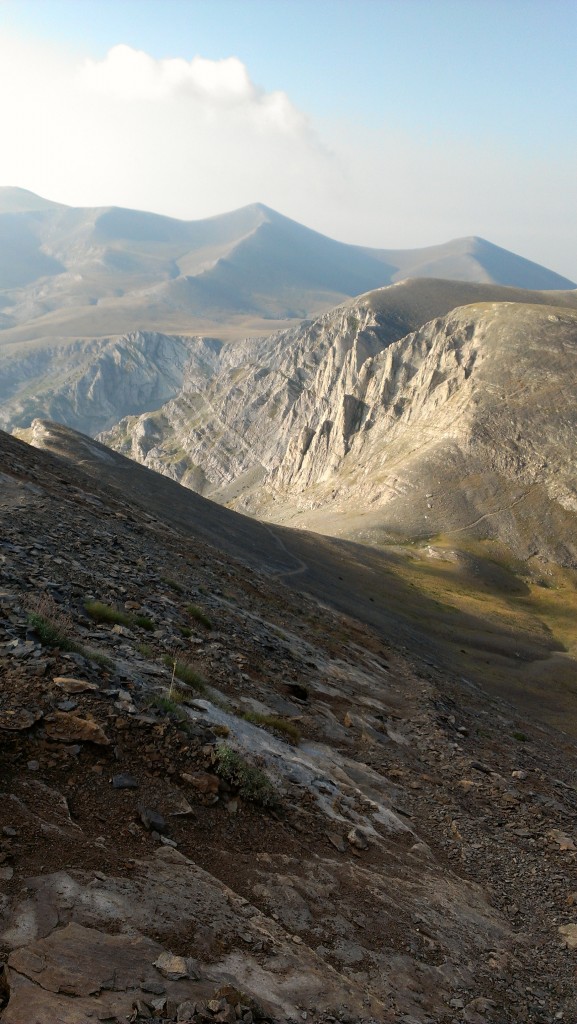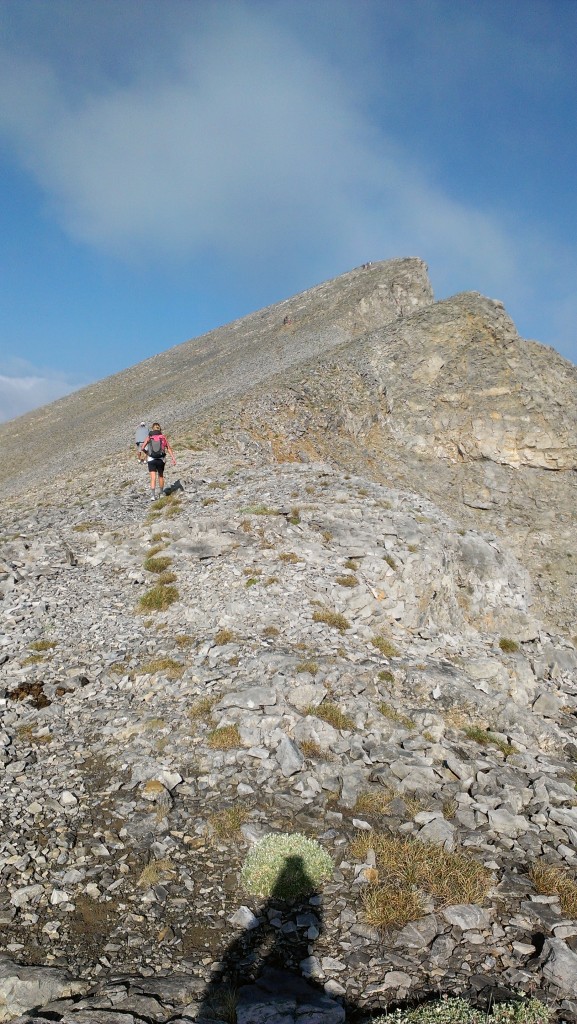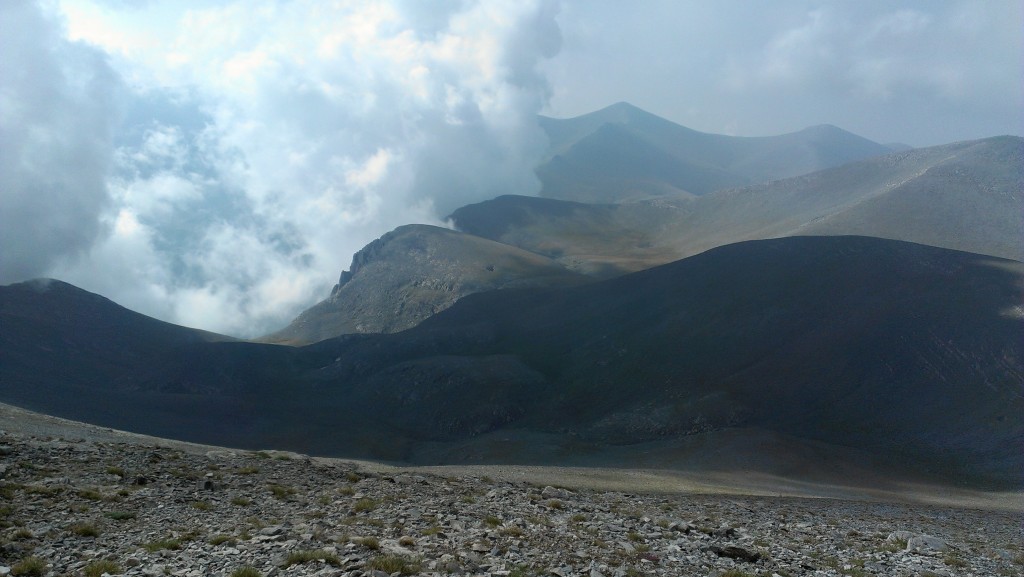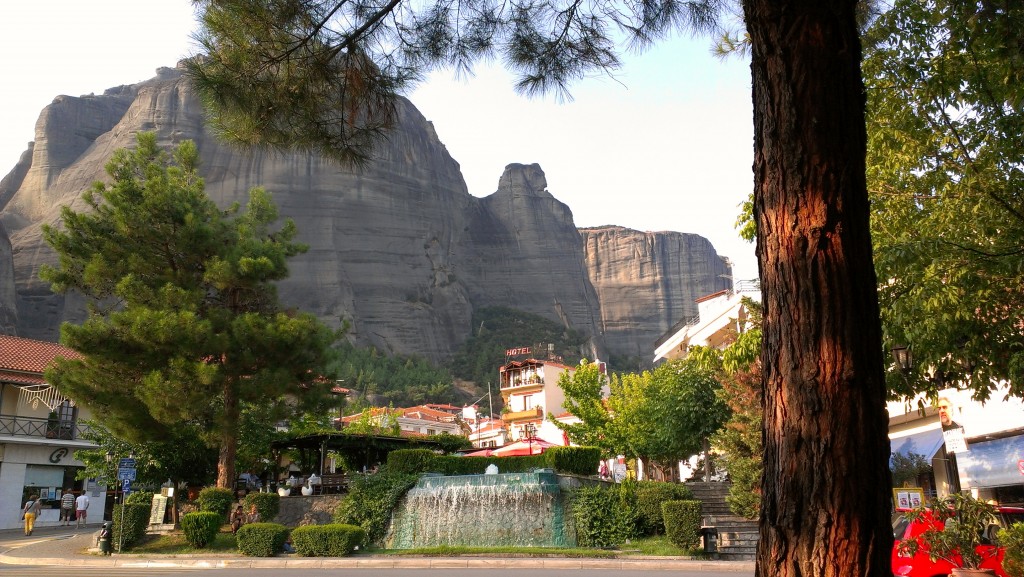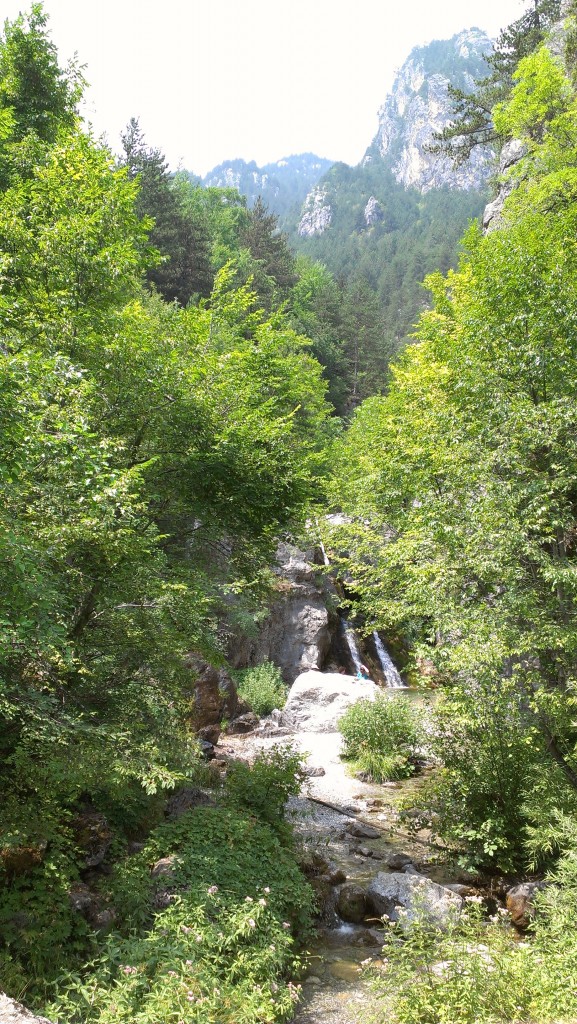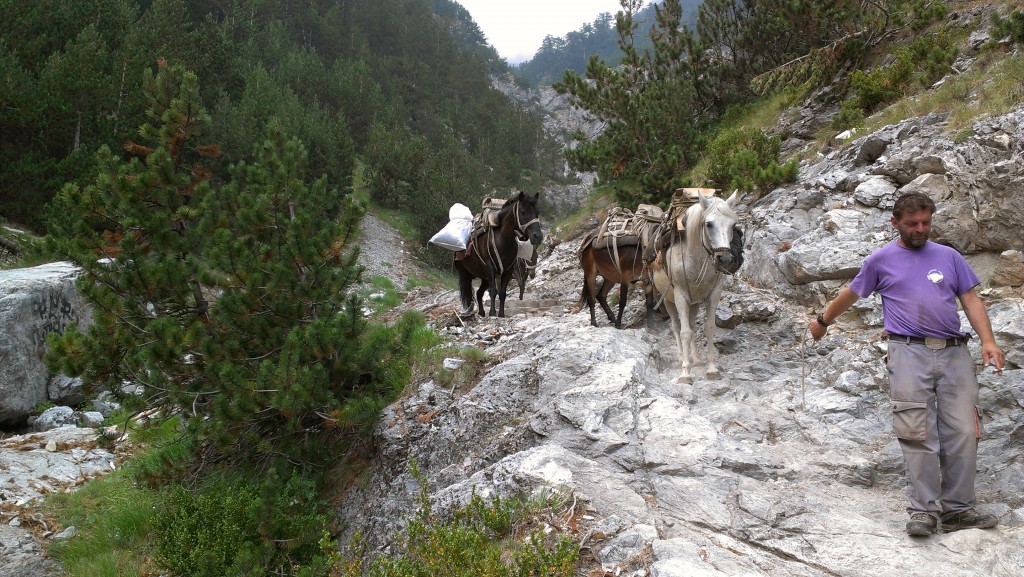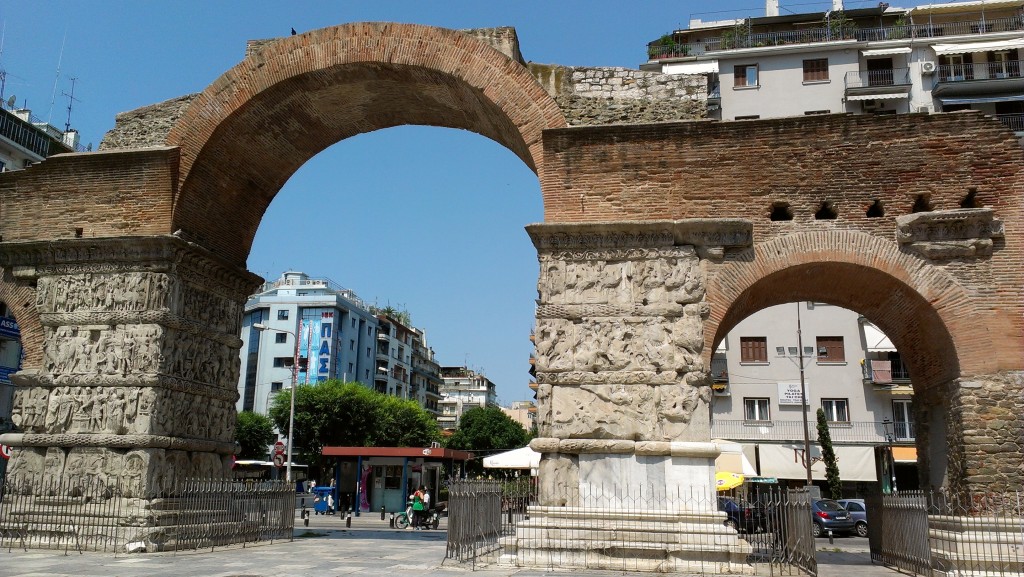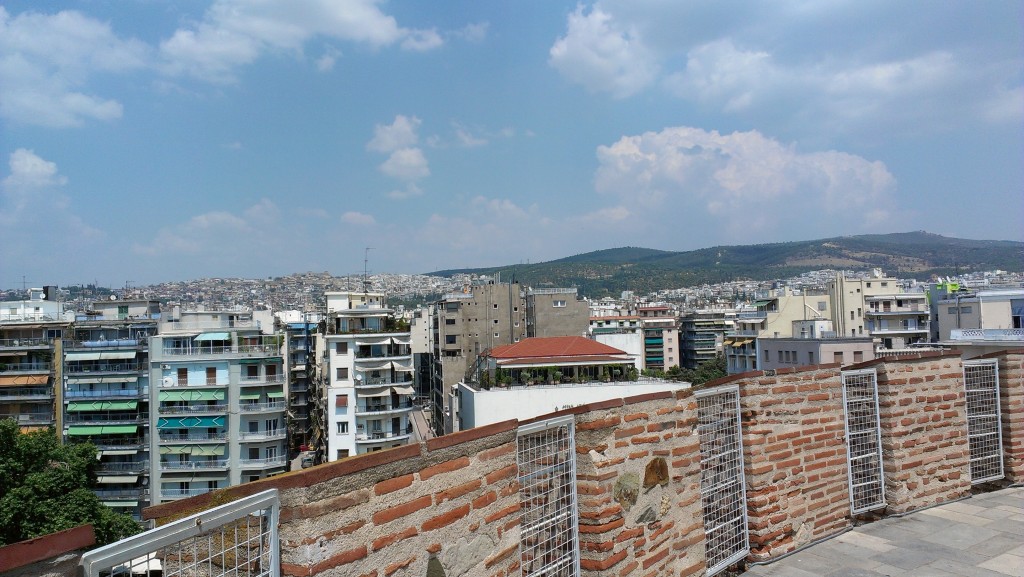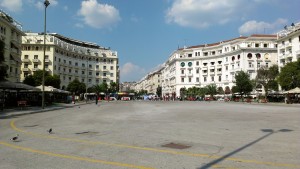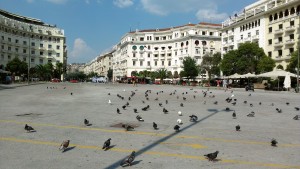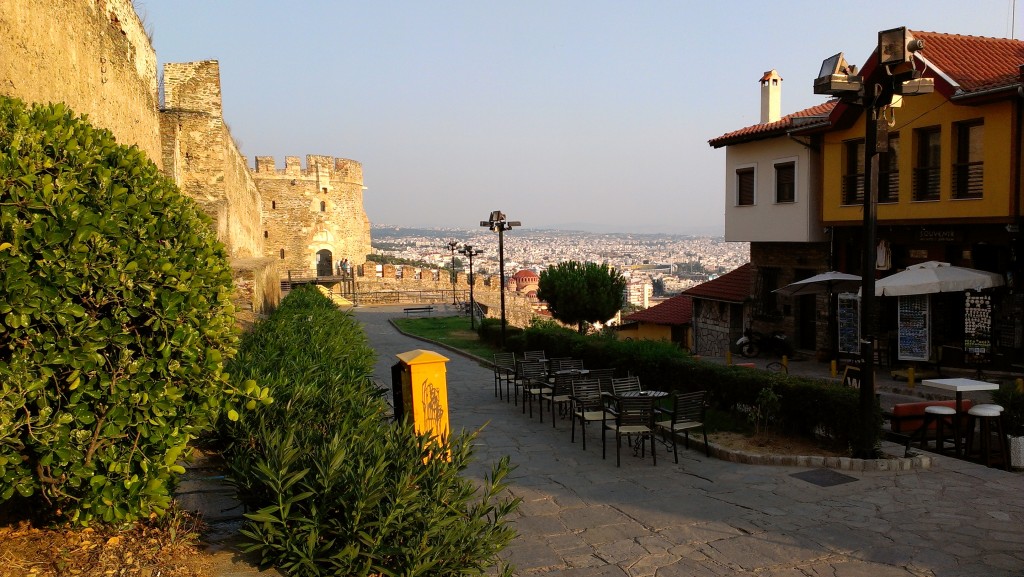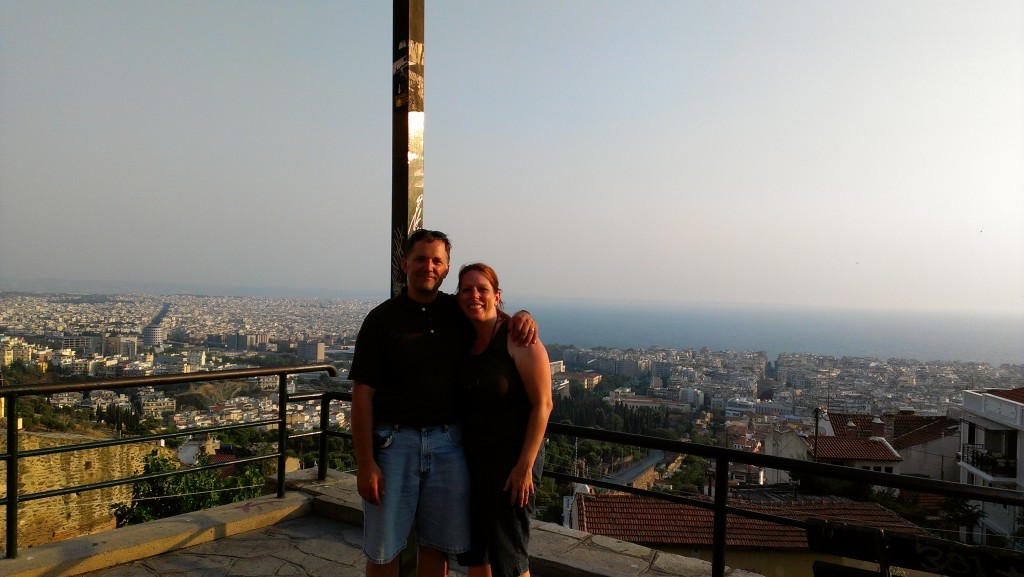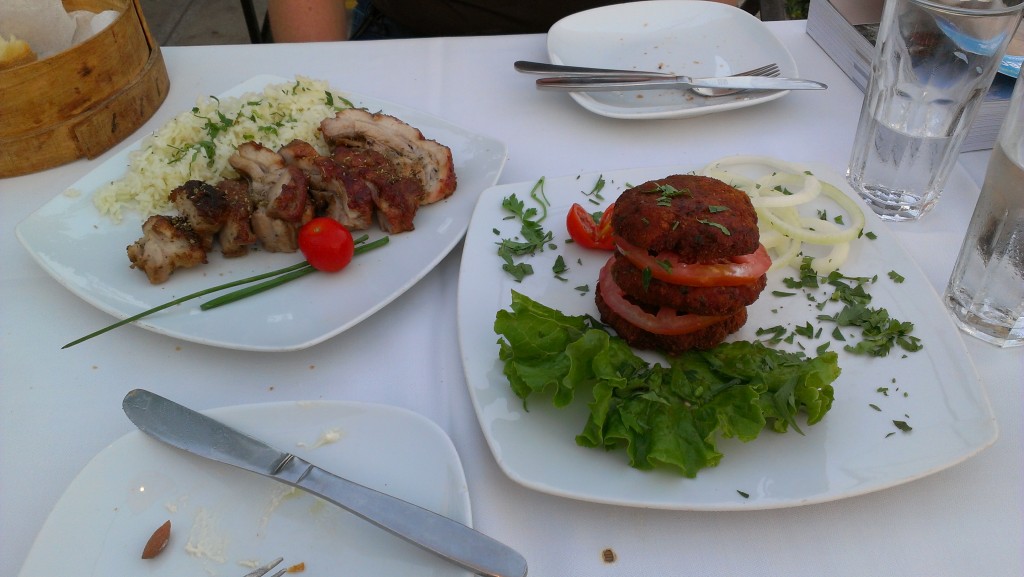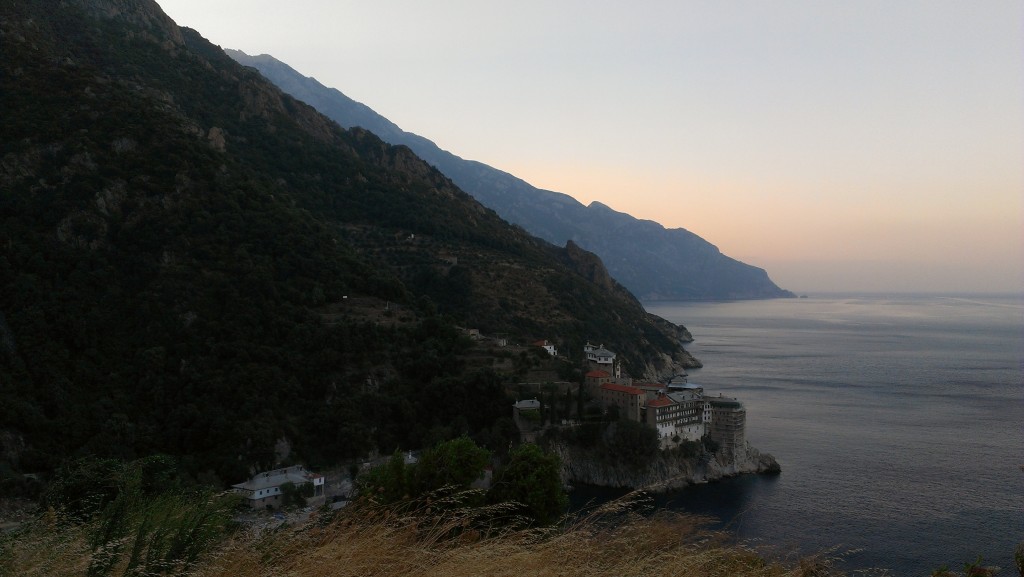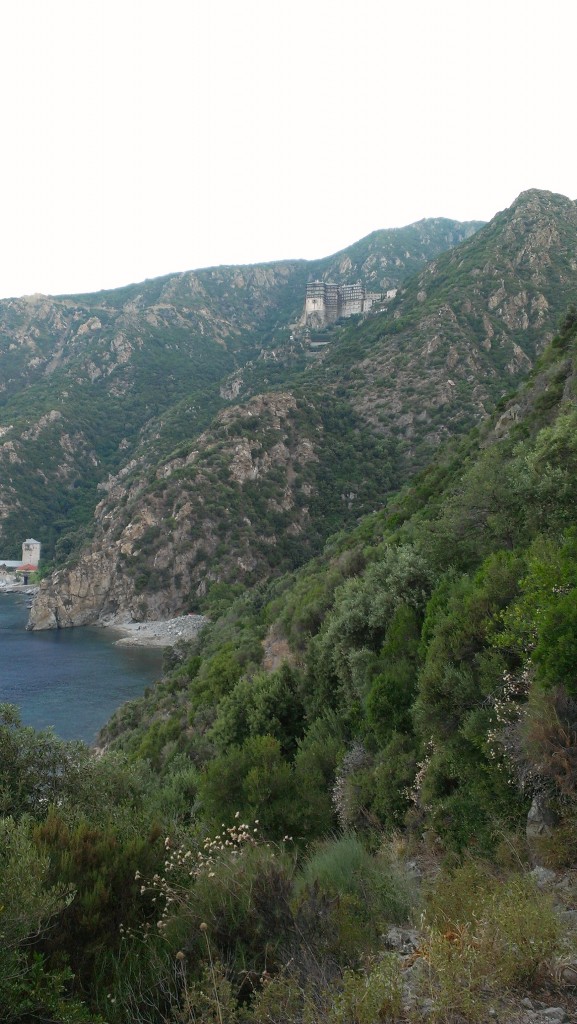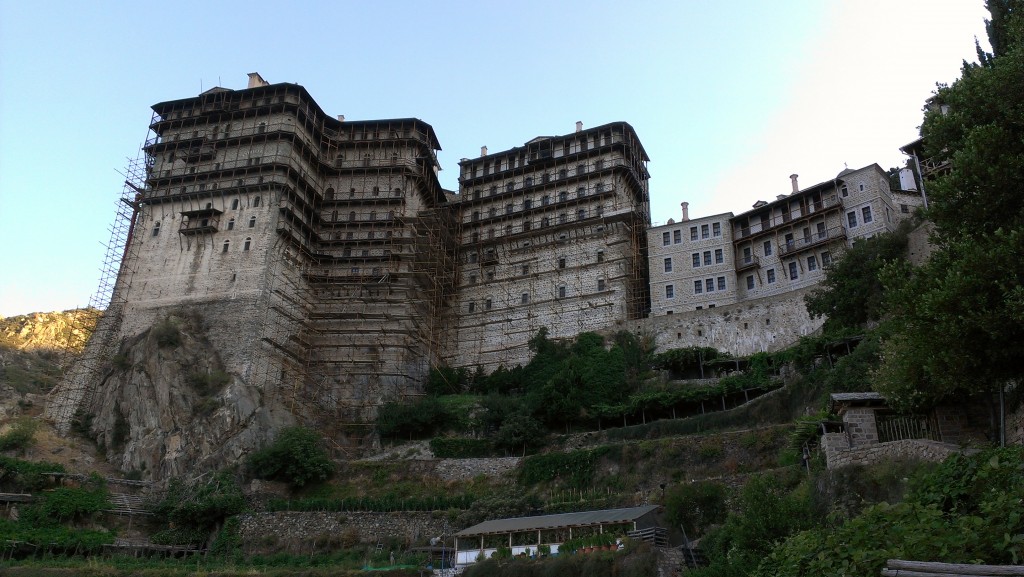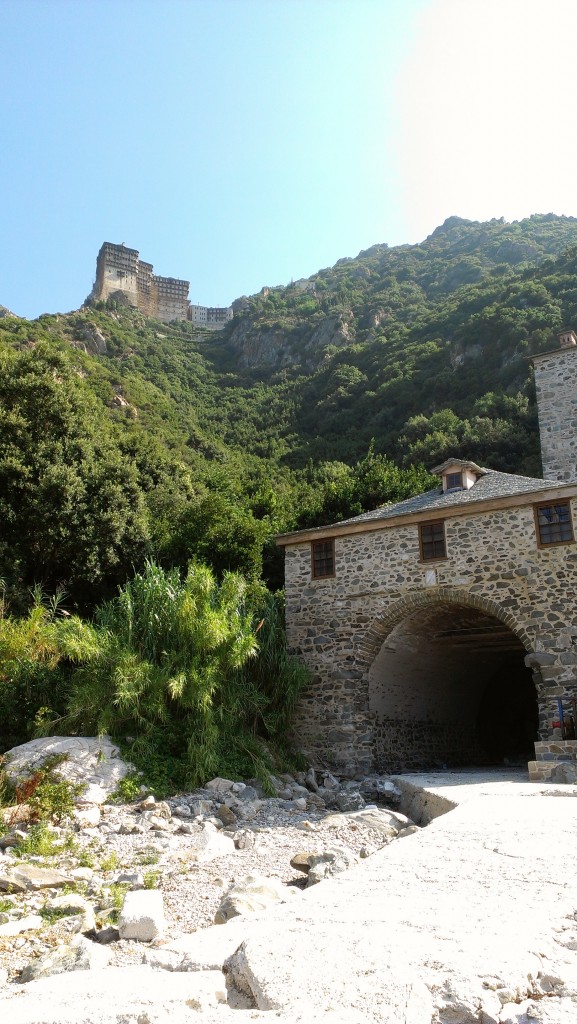Greece is the first country on this list since France that we’ve both actually visited. In fact, writing up our trip to Greece was the reason we started this blog in the first place. You can read all about our adventures there starting from this post. It’s a fun ride – we go lots of interesting places and eat lots of stuff.
But speaking of eating stuff, what’s on tap for THIS meal? When you look up “National Dish of Greece,” you get a number of possibilities, but one which scores surprisingly high is Fasolatha, which is a white bean stew. (Another one is Moussaka, but neither of us are huge fans of eggplant, and there were plenty of other options.) We decided to make that, grill some souvlaki, and make a dish of braised green beans, Fasolakia, as another vegetable.
Our original plan was to follow this with custard filled pastries for dessert, but those turned out to be too much to squeeze in after we returned from a grueling hike in the morning, so we made a pie called melopita instead, which we will talk about in due course.
This meal did require a bit of forward planning, as both the beans and chicken for the souvlaki had to soak overnight. The beans just in plain water, but the chicken was in a yogurt based marinade that also included olive oil, oregano, lemon, garlic, and paprika. Welcome to Greece!
The day of, we had two different bean dishes to cook, both of which had rather long cooking times, but fortunately, the schedules overlapped such that we could get one cooking before we started the second. So for our first trick, the white bean stew.
After soaking the beans overnight, they get a 30 minute or so boil in water to soften ’em up a bit. Wouldn’t want those beans getting too complacent. Um.
That accomplished, the stew starts with onion, carrot, and celery, your classic mirepoix, although probably not diced finely enough to really warrant that term, cooked in a whole lot of olive oil.
Next up, beans, tomato sauce, salt, and pepper. We found GREEK tomato sauce, so we were proud of ourselves!
Yeah, about that. A) that’s not sauce, as it turns out – it’s paste. B) It’s also Turkish, not Greek. Oh well – into the pot it went, with a bit more water to balance the fact that it’s paste and not sauce. And this then just cooks for a long time while we move on to the green beans.
Sadly, we didn’t get a bunch of pictures of this one cooking, but that’s because it was so little WORK there was almost nothing to photograph. Cook more onions in more olive oil (seriously, we used like half a bottle of olive oil for this meal) Add garlic, green beans, a large can of crushed tomatoes, and some red pepper flakes and dill. Cook until tender.
With those both going, and timed to be ready at roughly the same time, it was time to fire up the grill for the souvlaki. Sadly, it was pretty gloomy outside, so we didn’t take any pictures. In fact, we have no more “in process” pictures at all.
But we put meet on sticks and grilled it. It smelled like grilling meat on sticks, i.e. AMAZING. Finally, we fried up some grilling cheese (apparently setting it on fire is more of a Greek-American thing), and put everything on plates, topping the souvlaki with a lemon juice / olive oil dressing. They looked like this:
Doesn’t that look delicious? It really, really was. The real star of the show, to my surprise was the green bean dish: fasolakia. Everything was good, but that to me was the dish that stood out the most – the dill and the garlic just did something magic to the tomato sauce. The souvlaki was tasty grilled meat, and the soup was hearty and filling. We would make any of these again in a heartbeat.
For dessert, since we decided the pastries would take too long to sort, we made a honey pie, which may be the easiest desert we have ever made. Here’s the method:
Mix five ingredients in a bowl. Put the batter in a pan. Bake it.
That’s it. The ingredients are nothing more than ricotta cheese (this would be a different, but similar cheese in Greece itself), honey, sugar, eggs, and vanilla. Mix, pour, bake, done.
The edges are a little rough because we ran out of cornstarch, so the sides stuck to the pan. But it was heavenly, and it set up nicely.
We have not yet shared the very best part of this meal yet, however. The very best part of this meal was that we SHARED IT WITH OTHER PEOPLE! For the first time since BULGARIA, we actually cooked for more than just the two of us, and it was fantastic to finally have friends over for a meal and a board game. They brought cocktails, too!
Pandemics are stupid, and you should get vaccinated if you aren’t already.
As a postscript, we DID make those pastries a few nights later when we had time. Bougatsa are custard filled phyllo pastries, giving us the chance to remind ourselves once again that phyllo is a harsh mistress.
They start with a custard made from butter, sugar, eggs, vanilla, and semolina flour, which you are supposed to add a LOT earlier in the process than we remembered to.
If you add the semolina too fast or too late (we did both) it gets lumpy. On the other hand, if you just leave it out, it never thickens at all. So we had a slightly lumpy custard to spread on our phyllo sheets.
These get wrapped up into perfectly, 100% regular packets, covered with a completely uniform brushing of butter. No differences or irregularities whatsoever.
Nailed it.
Still, as long as you considered them individually, and don’t think about the second one from the bottom on the left, they turned out fine – crispy and sweet, and what’s not to like about a custard pastry?
And that’s Greece! It was tasty, took us back to our blogging roots, and let us HAVE DINNER WITH ACTUAL OTHER PEOPLE! YAY!
Next up, we take a culinary adventure to Grenada, hopefully unaccompanied by Marines.

